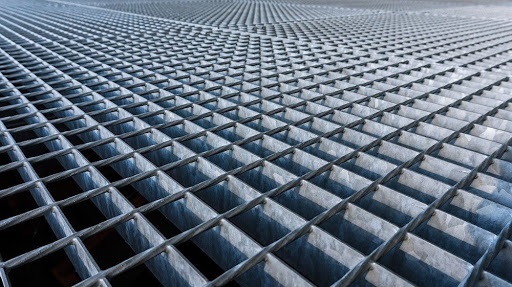Steel grating is a popular building material that is used in various applications, such as flooring, walkways, stair treads, and industrial platforms. It is strong, durable, and offers excellent load-bearing capabilities, making it a top choice in construction and industrial settings. But what are the standard steel grating dimensions and how do you choose the right one for your project? In this blog, we will discuss everything you need to know about steel grating dimensions.

Standard Steel Grating Dimensions
Steel grating is available in various sizes and dimensions, which can be customized based on the specific requirements of the project. However, there are some standard dimensions that are commonly used in the industry. The following are the standard steel grating dimensions:
1. Bearing Bar Height: This refers to the height of the steel bar that forms the top of the grating. The standard heights are 20mm, 25mm, 30mm, and 40mm.
2. Bearing Bar Thickness: The thickness of the bearing bar varies, depending on the load-bearing capacity required. The standard thicknesses are 3mm, 4mm, 5mm, and 6mm.
3. Cross Bar Pitch: This is the distance between the cross bars, which determines the spacing and provides traction. The standard pitches are 30mm and 40mm.
4. Cross Bar Diameter: This refers to the thickness of the cross bar that forms the lower part of the steel grating. The standard diameters are 6mm and 8mm.
Choosing the Right Steel Grating Dimensions
When choosing the right steel grating dimensions for your project, there are several factors to consider. These include:
1. Load-Bearing Capacity: The load-bearing capacity of the steel grating is the maximum weight it can support without bending or breaking. You need to determine the maximum weight that the grating will be subjected to and choose the dimensions accordingly.
2. Span Length: The span length refers to the distance between the supports or the point where the steel grating is fixed. You need to choose the dimensions that can span the required distance without deflecting.
3. Application: The application of the steel grating also determines the dimensions. For example, if you are using it for flooring or walkways, you need a smaller pitch for better traction. If you are using it for industrial platforms, you need a larger pitch for easy cleaning.
4. Environmental Conditions: The environmental conditions, such as temperature, moisture, and corrosive substances, can affect the durability and performance of the steel grating. You need to choose the right dimensions that can withstand the conditions of your environment.
In Conclusion
Steel grating is a versatile and durable building material that is widely used in various applications. The standard steel grating dimensions include bearing bar height, thickness, cross bar pitch, and diameter. When choosing the right dimensions for your project, you need to consider the load-bearing capacity, span length, application, and environmental conditions. With the right dimensions, you can ensure the safety, durability, and efficiency of your structure or platform.